Extreme Convection vs. Extreme Rainfall: a Global View
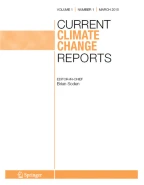
There is concern that extreme weather events may become stronger, more frequent, or both as the climate changes. This paper seeks more clarity in defining different types of extreme storms, and the global distribution of each type.
Recent Findings
Detailed case studies of specific events over the United States are revealing but the only way to document such occurrences globally is by using radar profiles from the GPM core satellite. Recent results differ somewhat depending on specific definitions and approaches, but they are starting to converge.
Summary
We demonstrate the global distribution of the ~ 1000 most extreme events of each type over a 5-year period and find that in addition to testing for extreme rain rates and extremely intense convection, we must also differentiate by size. Large rain areas containing extreme rates are exclusively oceanic, small rain areas often have extreme rates over land. The most intense convective cores are almost exclusively over land, regardless of size.
This is a preview of subscription content, log in via an institution to check access.
Access this article
Subscribe and save
Springer+ Basic
€32.70 /Month
- Get 10 units per month
- Download Article/Chapter or eBook
- 1 Unit = 1 Article or 1 Chapter
- Cancel anytime
Buy Now
Price includes VAT (France)
Instant access to the full article PDF.
Rent this article via DeepDyve
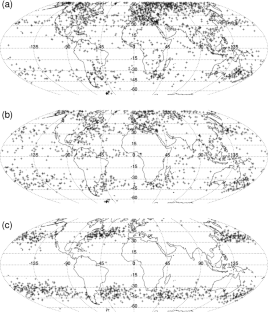
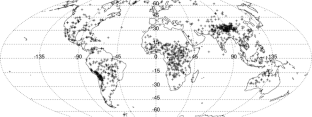
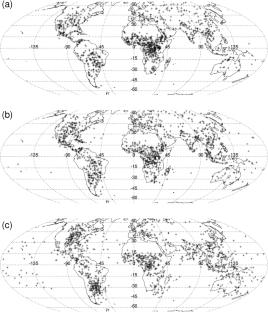
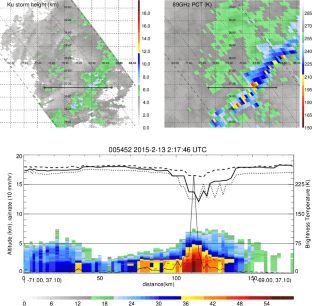
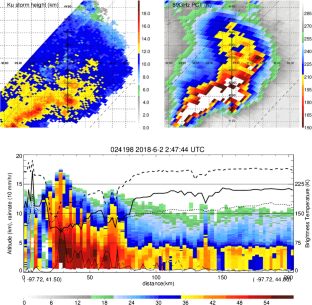
Similar content being viewed by others
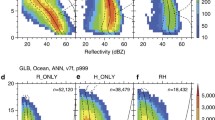
Weak linkage between the heaviest rainfall and tallest storms
Article Open access 24 February 2015
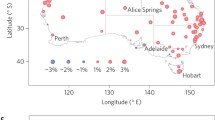
Steeper temporal distribution of rain intensity at higher temperatures within Australian storms
Article 08 June 2015
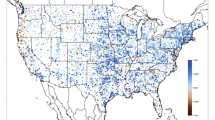
North American extreme precipitation events and related large-scale meteorological patterns: a review of statistical methods, dynamics, modeling, and trends
Article Open access 20 September 2019
References
- Prein AF, Liu C, Ikeda K, Trier SB, Rasmussen RM, Holland GJ, Clark MP. Increased rainfall volume from future convective storms in the US. Nat Clim Chang. 2017;7(12):880–4. https://doi.org/10.1038/s41558-017-0007-7. ArticleGoogle Scholar
- Prein AF, Holland GJ. Global estimates of damaging hail hazard. Weather Clim Extremes. 2018;22(12):10–23. https://doi.org/10.1016/j.wace.2018.10.004. ArticleGoogle Scholar
- Tippett MK, Allen JT, Gensini VA, Brooks HE. (2015): Climate and hazardous convective weather. Curr Cli Change Rep. 2015;1:60–73. https://doi.org/10.1007/s40641-015-0006-6. ArticleGoogle Scholar
- Hamada A, Takayabu YN, Liu C, Zipser EJ. Weak linkage between the heaviest rainfall and tallest storms. Nat Commun. 2015;6(1):6213. https://doi.org/10.1038/ncomms7213. ArticleCASGoogle Scholar
- Hamada A, Takayabu YN. Large-scale environmental conditions related to midsummer extreme rainfall events around Japan in the TRMM region. J Climate. 2018;31:6933–45. https://doi.org/10.1175/JCLI-D-17-0632.1. ArticleGoogle Scholar
- Wang T, Tang G. Spatial variability and linkage between extreme convections and extreme precipitation revealed by 22-year space-borne precipitation radar data. Geophys Res Lett. 2020;46:e2020GL088437. https://doi.org/10.1029/2020GL088437. ArticleGoogle Scholar
- Gingrey A, Varble A, Zipser E. Relationships between extreme rain rates and convective intensities from the perspectives of TRMM and WSR-88D radars. J Appl Meteor Clim. 2018 (57). https://doi.org/10.1175/JAMC-D-17-0240.1.
- Petersen WA, Carey LD, Rutledge SA, Knievel JC, Doeskin NJ, Johnson RH, McKee TB, Vonder Haar T, Weaver JF. Bull Amer Meteor Soc. 1999;(80; 2):191–216. https://doi.org/10.1175/1520-0477(1999)0802.0.CO;2.
- Gochis D, et al. The great Colorado flood of September 2013. Bull Amer Meteor Soc. 2015;96(9):1461–87. ArticleGoogle Scholar
- Smith JA, Baeck ML, Steiner M, Miller AJ. Catastrophic rainfall from an upslope thunderstorm in the central Appalachians: the Rapidan storm of June 27, 1995. Water Resour Res. 1996;32:3099–113. ArticleCASGoogle Scholar
- Sohn B, Ryu GH, Song HJ, Ou ML. Characteristic features of warm-type rain producing heavy rainfall over the Korean Peninsula inferred from TRMM measurements. Mon Weather Rev. 2013;141(11):3873–88. https://doi.org/10.1175/MWR-D-13-00075.1. ArticleGoogle Scholar
- Hamada A, Murayama Y, Takayabu YN. Regional characteristics of extreme rainfall extracted from TRMM PR measurements. J Climate. 2014;27(21):8151–69. https://doi.org/10.1175/JCLI-D-14-00107.1. ArticleGoogle Scholar
- Byers HR, Braham RR. Thunderstorm structure and circulation. J Atmos Sci. 1952;5:71–86. Google Scholar
- Miller LJ, Tuttle JD, Knight. Airflow and hail growth in a severe northern high plains supercell. J Atmos Sci. 1988;45(4). https://doi.org/10.1175/1520-0469(1988)0452.0.CO;2.
- Schumacher RS, Johnson RH. Organization and environmental properties of extreme rain-producing mesoscale convective systems. Mon Wea Rev. 2005; 133(4). https://doi.org/10.1175/MWR2899.1.
- Houze RA Jr. 100 years of research on mesoscale convective systems. Meteor Monogr. 2018; 59(1). https://doi.org/10.1175/AMSMONOGRAPHS-D-18-0001.1.
- Pendergrass AG. Changing degree of convective organization as a mechanism for dynamic changes in extreme precipitation. Cur Cli Chg Rep. 2020;6:47–54. https://doi.org/10.1007/s40641-020-00157-9. ArticleGoogle Scholar
- Zipser EJ, Cecil DJ, Liu C, Nesbitt SW, Yorty DP. Where are the most intense thunderstorms on Earth? Bull Amer Meteor Soc. 2006;87(8):1057–72. https://doi.org/10.1175/BAMS-87-8-1057. ArticleGoogle Scholar
- Cecil DJ. Relating 37-GHz scattering to radar profiles in strong convection. J Appl Meteor Clim. 2011; 50. https://doi.org/10.1175/2010JAMC2506.1.
- Petersen WA, Christian HJ, Rutledge SA. TRMM observations of the global relationship between ice water content and lightning. Geophys Res Lett. 2005; 32 (14). https://doi.org/10.1175/2010JAMC2506.1.
- Liu C, Cecil DJ, Zipser EJ, Kronfeld K, Robertson R. Relationships between lightning flash rates and radar reflectivity vertical structures in thunderstorms over. the tropics and subtropics. J Geophys Res Atmos. 2012; 117(D6). https://doi.org/10.1029/2011JD017123.
- DeMott CA, Rutledge SA. The vertical structure of TOGA COARE convection. Part 1: Radar echo distributions. J Atmos Sci. 1998;55:2730–47. ArticleGoogle Scholar
- Szoke EJ, Zipser EJ. A radar study of convective cells in mesoscale systems in GATE. Part 1: Vertical profile statistics and comparison with hurricanes. J Atmos Sci. 1986;43:182–98. ArticleGoogle Scholar
- Caracena F, Maddox RA, Hoxit LR, Chappell CF. Mesoanalysis of the Big Thompson storm. Mon Wea Rev. 1979;107:1–17. ArticleGoogle Scholar
- Smith JA, Baeck ML, Zhang Y, Doswell CA. Extreme rainfall and flooding from supercell thunderstorms. J Hydrometeor. 2001;2:469–89. ArticleGoogle Scholar
- Nielsen ER, Herman GR, Tournay RC, Peters JM, Schumacher RS. Double impact: when both tornadoes and flash floods threaten the same place at the same time. Wea Forecast. 2015;30(6):1673–93. https://doi.org/10.1175/WAF-D-15-0084.1. ArticleGoogle Scholar
- Smith JA, Cox AA, Baeck ML, Yang L, Bates P. Strange floods: the upper tail of flood peaks in the US. Water Resour Res. 2018;54:6510–42. https://doi.org/10.1029/2018WR022539. ArticleGoogle Scholar
- Smith JA, Baeck ML, Yang L, Signell J, Morin E, Goodrich DC. The paroxysmal precipitation of the desert: flash Floods in the southwestern U.S. Water Resour Res. 2019;55:10218–47. https://doi.org/10.1029/2019WR025480. ArticleGoogle Scholar
- Liu C, Zipser EJ, Cecil DJ, Nesbitt SW, Sherwood S. A cloud and precipitation feature database from nine years of TRMM observations. J Appl Meteorol Climatol. 2008;47(10):2712–28. https://doi.org/10.1175/2008JAMC1890.1. ArticleGoogle Scholar
- Iguchi T, Kozu R, Meneghini R, Awaka J, Okomoto K. Rain profiling algorithm for the TRMM precipitation radar. J Appl Meteor. 2000;39:2038–52. ArticleGoogle Scholar
- Seto S, Iguchi T. Intercomparison of attenuation correction methods for the GPM dual-frequency precipitation radar. J Atmos Oceanic Technol. 2015;32:915–26. https://doi.org/10.1175/JTECH-D-14-00065.1. ArticleGoogle Scholar
- Rosenfeld D, Ulbrich CW. Cloud microphysical properties, processes, and rainfall estimation opportunities. Meteor Monogr. 2003;30(52):237–58. https://doi.org/10.1175/0065-9401(2003)0302.0.CO;2.
- Rauber RM, Nesbitt SW. Radar meteorology, a first course. Wiley Blackwell, Wiley; 2018, 2018.
- Ralph FM, Dettinger MD. Storms, floods, and the science of atmospheric rivers. Eos. 2011;92(32):265–6. https://doi.org/10.1029/2011/EO320001. ArticleGoogle Scholar
- Feng Z, Houze RA Jr, Leung LR, Song F, Hardin JC, Wang J, Gustafson WI Jr, Homeyer CR. Spatiotemporal characteristics and large-scale environments of mesoscale convective systems east of the Rocky Mountains. J Climate. 2019; 32 (21). https://doi.org/10.1175/0065-9401(2003)0302.0.CO;2.
- Nesbitt SW, et al. A storm safari in subtropical South America: proyecto RELAMPAGO. Bull Amer Meteor Soc, early online release 19 April 2021. https://doi.org/10.1175/0065-9401(2003)0302.0.CO;2.
Acknowledgements
This research was supported by NASA Precipitation Measurement Mission grants NNX17AI99G and 80NSSC19K0673 under the direction of Dr. Gail Skofronick-Jackson. Thanks to the Precipitation Processing System (PPS) team at NASA Goddard Space Flight Center, Greenbelt, MD, for data processing assistance.
Author information
Authors and Affiliations
- Department of Atmospheric Sciences, University of Utah, 135 S. 1460 East, Salt Lake City, UT, 84112-0110, USA Edward J. Zipser
- Texas A&M University at Corpus Christi, Corpus Christi, TX, USA Chuntao Liu
- Edward J. Zipser









